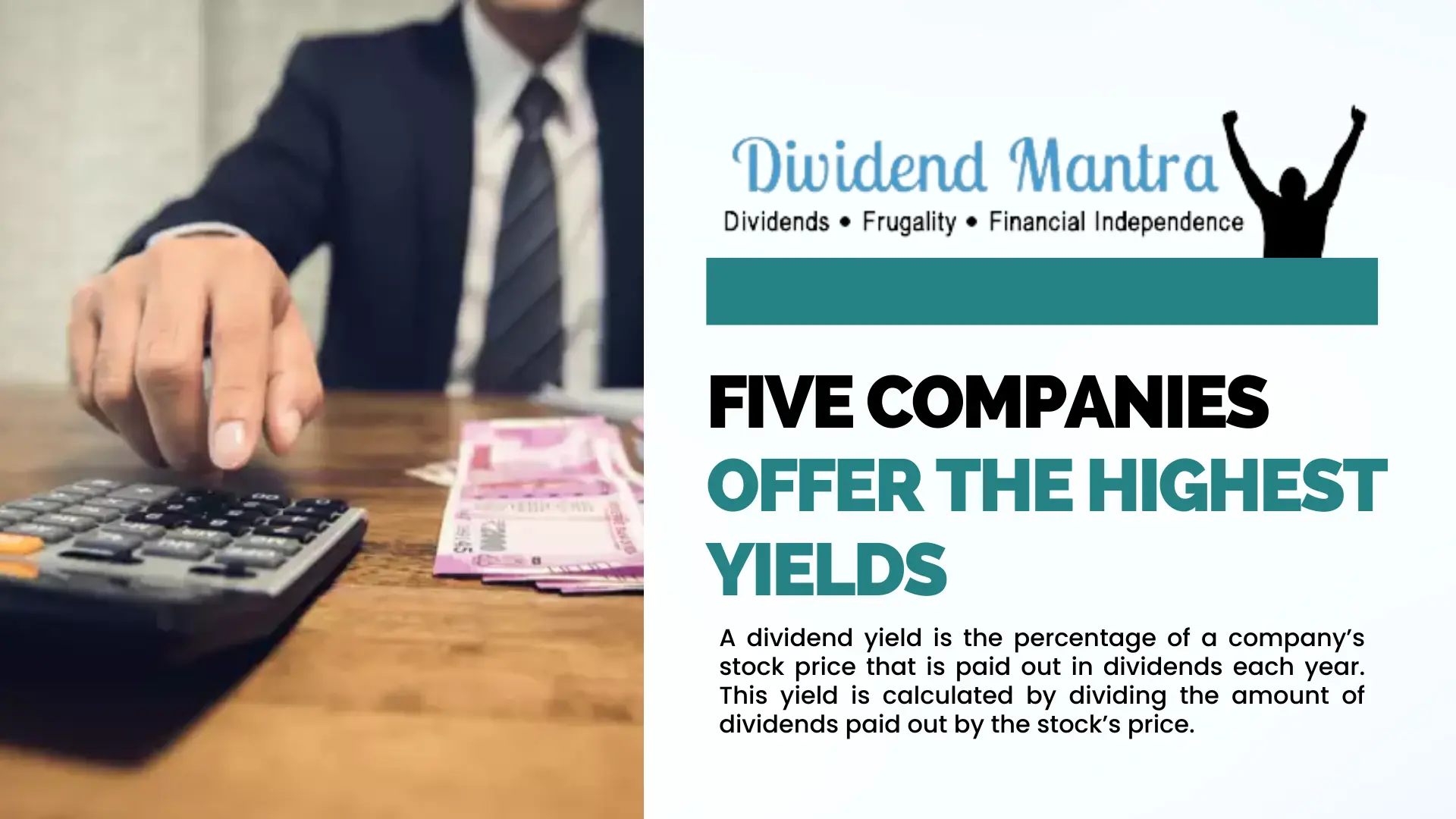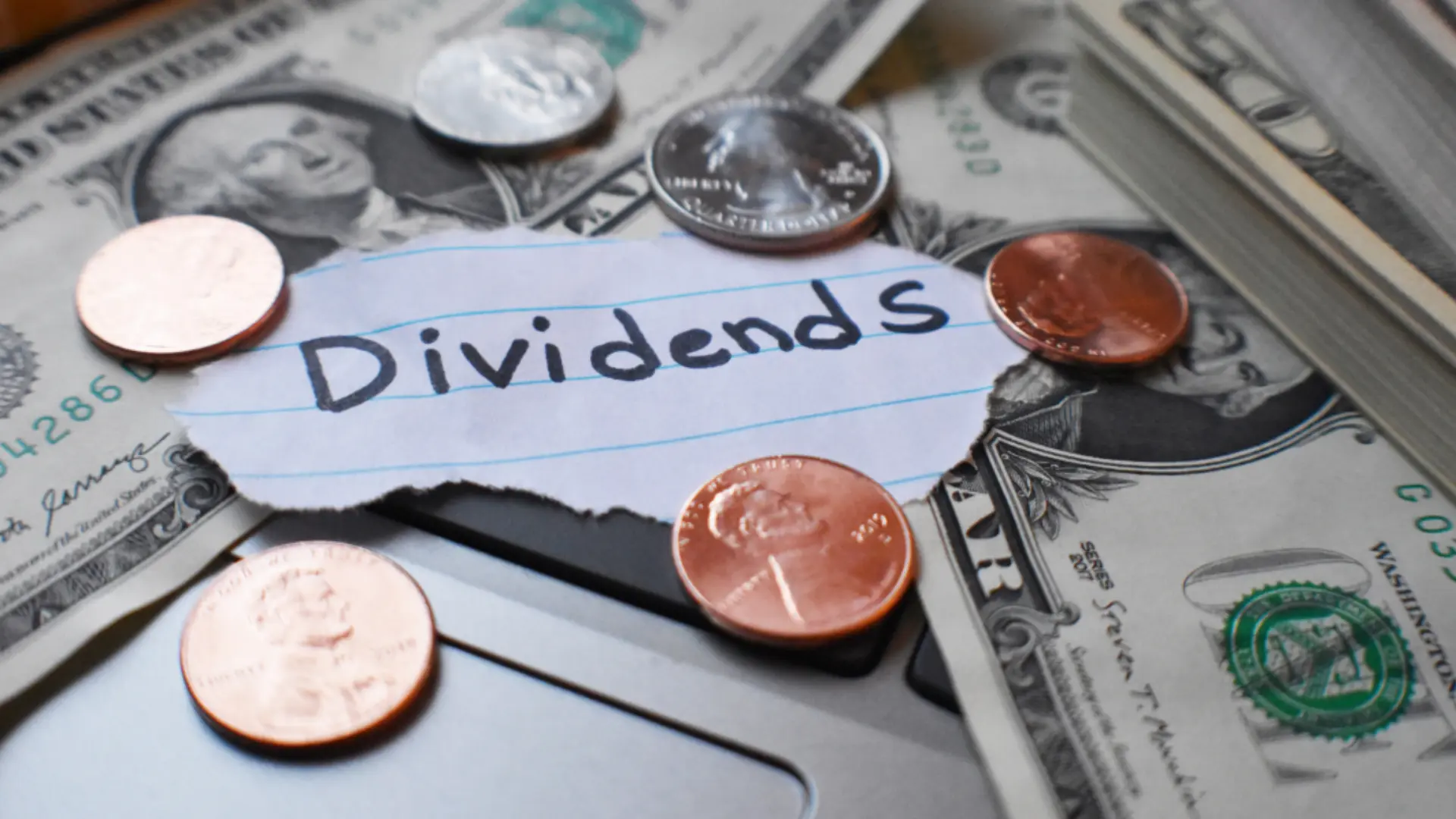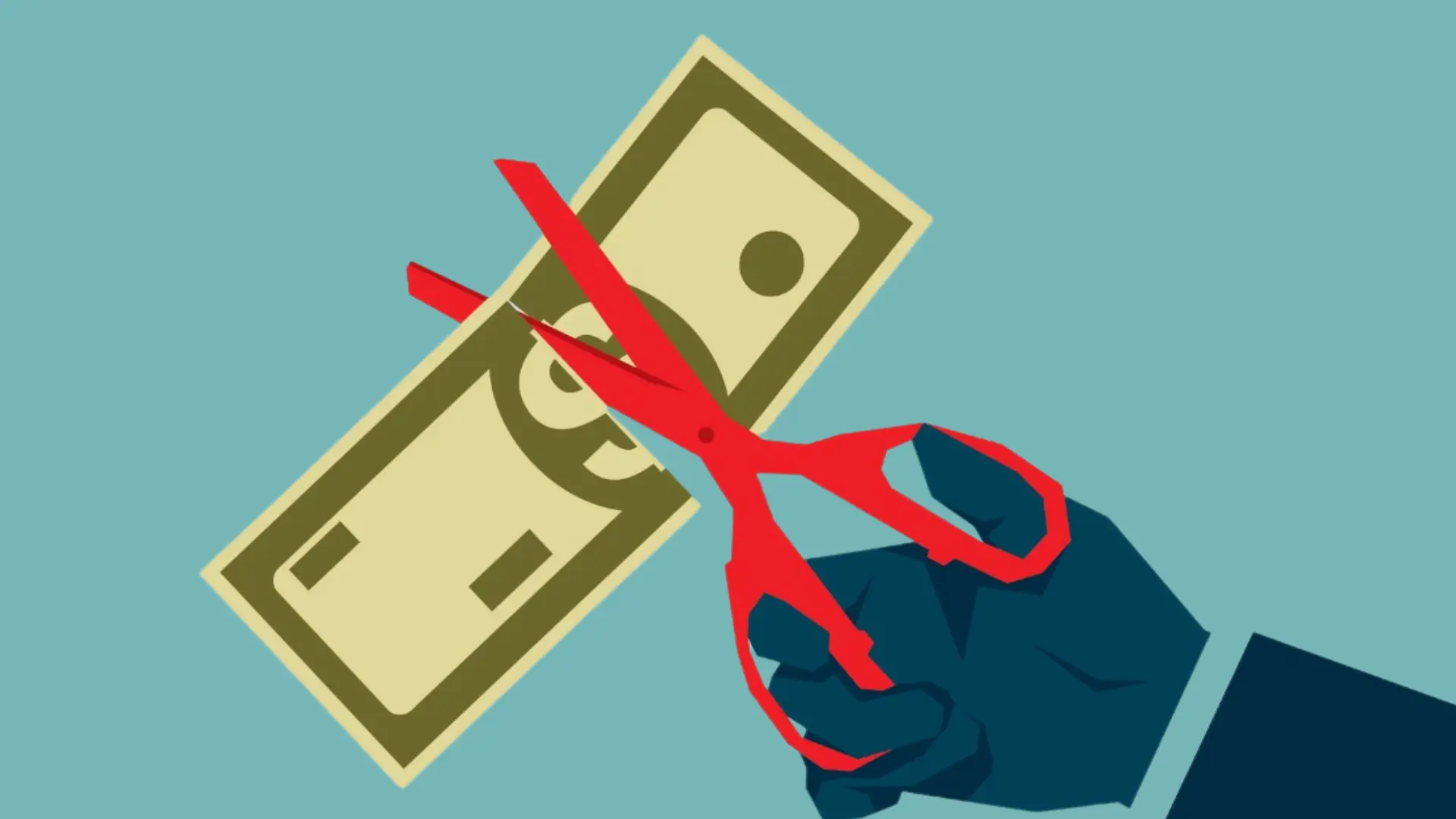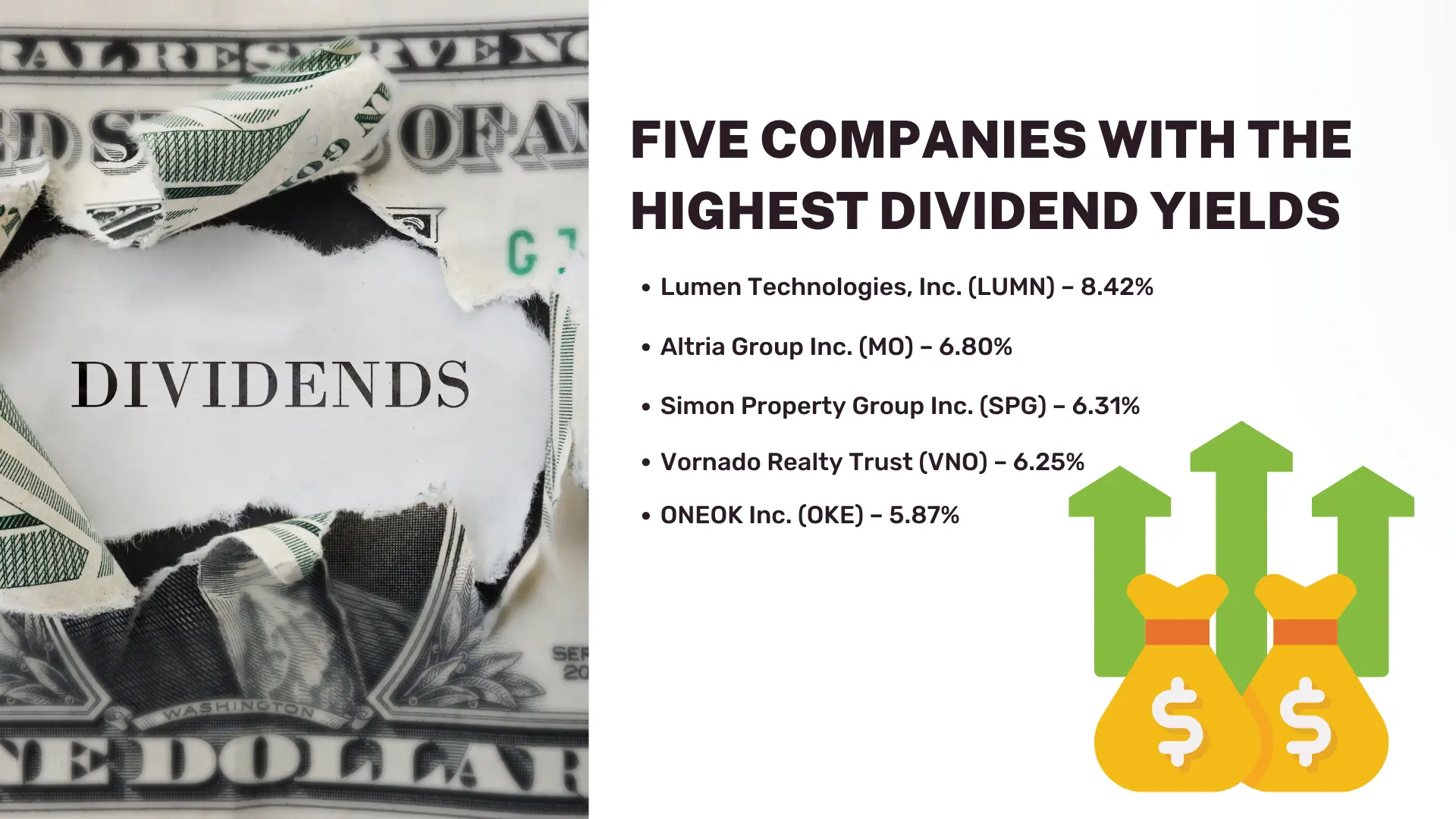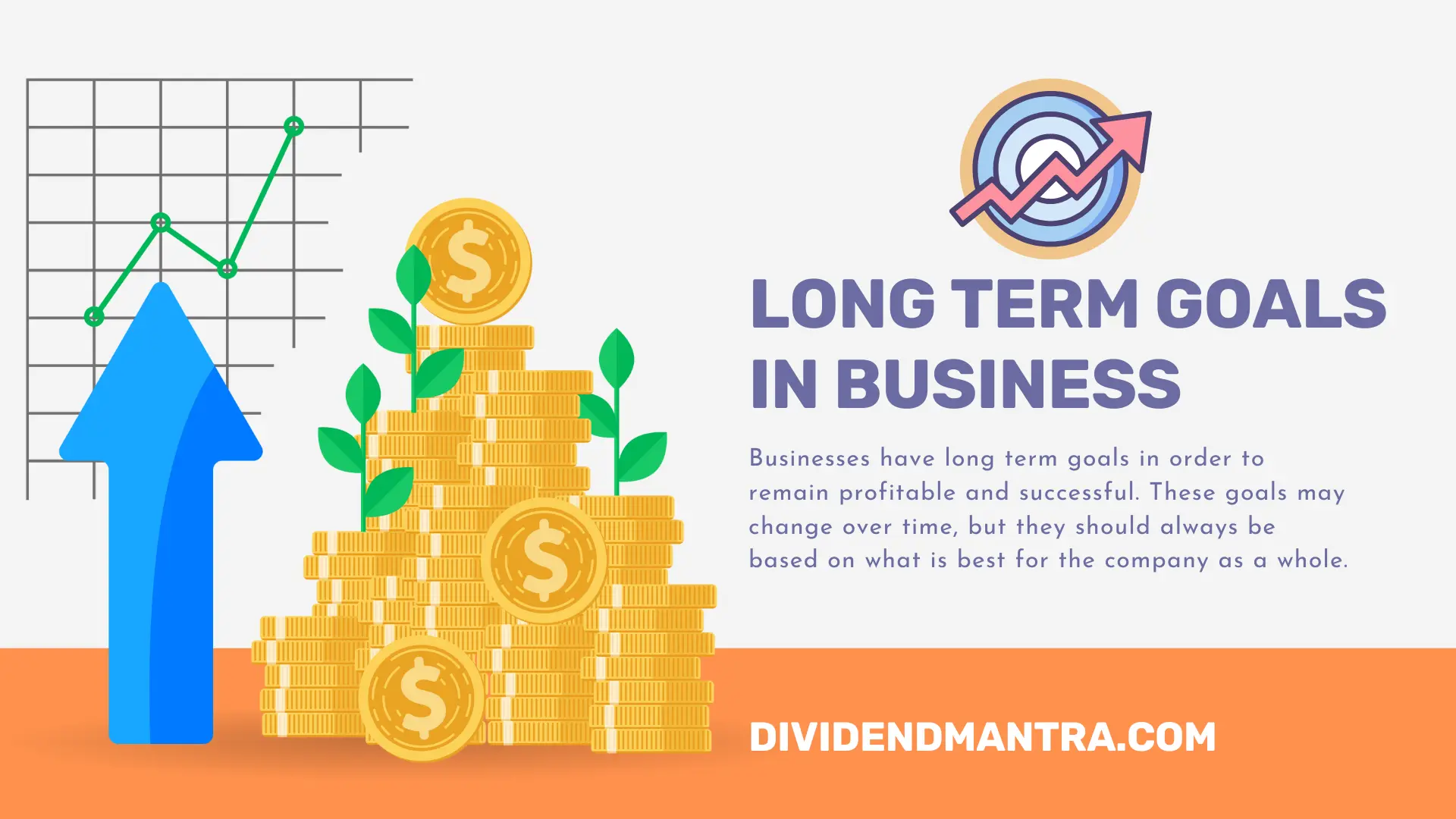These Five Companies Offer the Highest Yields on Their Dividends
A dividend yield is the percentage of a company’s stock price that is paid out in dividends each year. This yield is calculated by dividing the amount of dividends paid out by the stock’s price. For example, if a company pays out $2 per share in dividends and the stock price is $20, then the dividend yield would be 10%.
Dividends are payments made to shareholders from a company’s profits. They can be paid out as cash payments, or they can be reinvested back into the company to buy more shares. Dividends are typically paid on a quarterly basis, but some companies pay them annually or semi-annually.
The amount of dividends a company pays out can vary greatly depending on its profitability. Some companies choose to reinvest their profits back into the business instead of paying out dividends, while others may have trouble covering their dividend payments. This may signal a sign of trouble for that company.
Investors have long been drawn to dividend-paying stocks. Not only do they offer a steady income stream, but they also tend to be less volatile than their non-dividend counterparts. This makes them a popular choice for both professional and casual investors alike.
One reason for this is that dividends provide a tangible link between a company and its shareholders. By paying out a portion of its profits to its investors, a company demonstrates that it is committed to creating value for its shareholders. In addition, dividends can act as a floor for stock prices during times of market volatility.
Another reason why dividend stocks are so popular is that they often outperform the broader market. A study by Ned Davis Research found that over the past 36 years, dividend-paying stocks have outperformed non-dividend payers by 2.5% per year.
The Importance of Dividends
Many people view dividends as a sign of a company’s financial stability and overall health. Dividends can be used as a way to measure how successful a company has been over time and can provide shareholders with regular income.
Some people also believe that dividends are important for stock prices. In general, when a company announces an upcoming dividend, the stock price will go up because it is seen as a sign of confidence in the company. Additionally, when a company increases its dividend, the stock price usually goes up as well.
As such, dividends are one of the most important aspects of investing. When you own a dividend-paying stock, you’re essentially receiving a portion of the company’s profits on a regular basis. This can provide you with a steady stream of income, which can be helpful during retirement or other tough times where you earn little or no cash from other sources. They can provide retirees with a steady stream of income, which can help them live comfortably in retirement. Also have a look at Higher Yields for Income-Focused Investors
Furthermore, dividends can increase your overall return on investment. If you reinvest your dividends, your shares will grow at a faster rate than if you just let them sit in your account.
Types of Dividends
The most common type of dividend is a cash dividend, which is paid in cash to shareholders on a set schedule. A company may also issue a stock dividend, which gives shareholders shares of the company’s stock. However, there are several other types of dividends that may interest you. We have listed all dividend types below.
1. Cash Dividend
Cash dividends are a portion of a company’s profits that are paid out to shareholders. The amount of the dividend is typically based on the number of shares that a shareholder owns. Cash dividends provide a regular income stream to shareholders, and they can also be used to reinvest in new shares or other assets.
Benefits of Cash Dividends
Cash dividends are a payment of cash to the shareholders of a company from its profits. They are one way companies can return value to their shareholders. There are several benefits of cash dividends:
i. Cash dividends provide a regular income stream to shareholders. This can be helpful for retirees or others who rely on dividend income to cover their living expenses.
ii. Cash dividends can provide a hedge against inflation. As prices rise, the purchasing power of dividend payments also rises.
2. Dividend Reinvestment Plans (DRIPs)
A dividend reinvestment plan, often referred to as a DRIP, is a program offered by some publicly traded companies that allows their shareholders to reinvest their cash dividends by purchasing additional shares of the company instead of receiving the cash payments. Some companies will also offer a discount on the purchase price of the additional shares when they are purchased through the dividend reinvestment plan.
Benefits of Dividend Reinvestment Plans (DRIPs)
There are a few key benefits of dividend reinvestment plans (DRIPs). First, DRIPs offer investors the opportunity to accumulate shares in a company at a discounted price. For example, if a company has a DRIP in place and you own 100 shares of that company, the company will automatically reinvest your dividends into more shares of the company. The price you pay for those additional shares will be discounted from the market price, typically by around 1-5%.
3. Stock Repurchase
A stock repurchase is the purchase by a company of its own shares of stock, usually in the open market. The purpose of a stock repurchase is to reduce the number of shares outstanding, which will increase the earnings per share (EPS) and make the remaining shares more valuable. Most large companies have a stock repurchase program, which allows them to buy back shares when they believe the stock is undervalued. Stock repurchases can be made in two ways: open market purchases and tender offers.
Open market purchases are when a company buys back its own stock from the open market. This can be done to try and increase the stock’s price, because it raises the demand for the stock and lowers the supply. It can also be done to reduce the number of shares outstanding, which makes each share worth more. A company will also buy back its own stock if it feels that its stock is undervalued.
A tender offer purchase is a type of stock purchase in which the purchaser offers to buy all of the outstanding shares of the company’s stock at a price that is above the current market price. This type of purchase is often used by companies that are looking to take over another company, as it allows them to purchase all of the target company’s stock at once, rather than having to negotiate with individual shareholders.
Benefits of Stock Repurchases
Stock repurchases, also known as buybacks, are a financial maneuver used by companies to reduce the number of shares outstanding. When a company buys back its own stock, it reduces the number of shares available on the open market. This has two main benefits for shareholders.
First, reducing the number of shares outstanding increases the value of each share. This is because a company’s earnings are spread out over a smaller number of shares, making each share worth more. Second, buybacks reduce the number of shares available on the market for other investors to buy. This helps keep the price of a share high, which can make it more likely that a firm will be able to raise capital in the future.
4. Property Dividend
A property dividend is a distribution of cash or other assets to shareholders from a company’s property holdings. The assets may be from the company’s own operations, such as rents or royalties, or from the sale of the property. Property dividends are used by companies to return value to shareholders and may be paid in addition to, or in lieu of, cash dividends.
Benefits of Property Dividends
One benefit of property dividends is that they can provide a larger stream of income for investors than regular dividends. This is because property dividends are paid out of the profits generated by the sale of properties, rather than from the company’s operating cash flow. In addition, because real estate prices have tended to rise over time, property dividends can offer investors a hedge against inflation.
5. Scrip Dividend
A scrip dividend is a type of dividend paid to shareholders in the form of additional shares in the company rather than in cash. For example, if a company pays a scrip dividend of 1 share for every 10 shares held, the shareholder will receive an additional 1 share for every 10 shares they own. Scrip dividends are not as common as cash dividends, but they can be useful for companies that want to conserve cash or avoid paying taxes on dividend income.
Benefits of Scrip Dividend
The benefits of receiving a scrip dividend are that it is often tax-free, and it can be reinvested to purchase additional shares of the company’s stock. Additionally, because the dividend is paid in securities, it may provide a greater return than a cash dividend. This type of dividend can also be advantageous for a company, because it allows the company to conserve cash and still reward its shareholders. Additionally, a scrip dividend can help a company attract new investors, because it allows the company to offer more shares without having to issue new stock.
6. Liquidating Dividend
Liquidating dividends are a distribution of corporate assets to shareholders made in the course of winding up a company. The term usually refers to a payment made by a company that is being dissolved, but it can also describe payments made by solvent companies to reduce their outstanding shares. Liquidating dividends are different from normal dividends in that they are not paid out of current or future profits, but out of the proceeds of the sale of corporate assets.
Benefits of Liquidating Dividends
Liquidating dividends are payments made by a company to its shareholders from the proceeds of the sale of assets. Benefits of liquidating dividends include:
i.) The company can distribute cash to its shareholders quickly and efficiently.
ii.) The company can reduce its debt burden by using the proceeds from the sale of assets to pay down its outstanding debt.
iii.) The company can improve its financial position by selling off non-core assets.
7. Qualified Dividend
Qualified dividends are a type of dividend that is taxed at a lower rate than other types of income. To be considered a qualified dividend, the dividend must meet certain criteria, including being paid by a U.S. company or a foreign company that is traded on a U.S. stock exchange. The dividend must also be paid out of profits that were taxed at the corporate level.
Benefits of Qualified Dividends
There are a few key advantages to receiving qualified dividends. But the main is that the tax rate on qualified dividends is typically lower than the tax rate on other forms of income. For example, in 2018, the tax rate on qualified dividends is just 10%, while the tax rate on ordinary income was as high as 37%. This lower tax rate can save taxpayers a lot of money. As qualified dividends are treated more favorably for tax purposes than other types of income, it is a top choice for many investors.
8. Special Dividend
A special dividend is a dividend payment made by a company to its shareholders that is outside of the company’s regular quarterly or annual dividend payments. Special dividends are often announced and paid in response to positive news or events that benefit the company such as the sale of a major asset, a large profit, or a tax settlement.
Benefits of Special Dividends
There are a few potential benefits of special dividends. First, they can provide a means of returning extra cash to shareholders without having to resort to selling assets or taking on new debt. This can be attractive to investors, particularly in times of market volatility, as it provides them with a relatively safe way to earn some extra income. Second, special dividends can help management keep its share prices up. This can be a positive sign for shareholders, as it shows that the company has good cash flow and is able to distribute some of its extra profits to its owners.
9. Interim Dividend
Interim dividends are those paid by a company between the annual meetings of its shareholders. They are not as common as regular dividends, but they are sometimes declared to provide extra income to shareholders before the end of a fiscal year or to make up for a shortfall in earnings. Interim dividends are usually smaller than regular dividends.
Benefits of Interim Dividends
Interim dividends offer a number of potential benefits for companies and shareholders. For companies, interim dividends can provide a way to return cash to shareholders and improve liquidity, while also providing a measure of financial stability and predictability. For shareholders, interim dividends can provide a regular income stream, as well as the potential for capital gains if the stock price rises after the dividend is paid.
10. Patronage Dividend
Patronage dividends are a type of financial compensation that business owners may offer to their customers in order to encourage loyalty and patronage. Patronage dividends are payments made by a business to its customers in the form of cash or discounts. The purpose of patronage dividends is to reward customers for their loyalty and to encourage them to continue doing business with the company. The amount of a patronage dividend typically depends on how much business the customer does with the company.
Benefits of Patronage Dividends
These dividends may take the form of discounts, free products or services, or special privileges that are not available to the general public. By providing tangible benefits to their regular customers, businesses can create a sense of exclusivity and strengthen customer relationships. This, in turn, can lead to increased sales and profits.
How To Find the Best Dividend Stocks
Investing in dividend stocks can provide stability and income for your portfolio. However, not all dividend stocks are created equal. Here are a few tips to help you find the best dividend stocks for your portfolio:
- Look for companies with a long history of paying dividends and increasing their payouts each year.
- Make sure the company is in good financial health and has a solid track record of profitability.
- Check to see how much of the company’s earnings are being paid out as dividends, and whether there is room for future increases.
- Be mindful of valuation – don’t overpay for a stock that doesn’t have a high yield.
- And finally, do your homework! Read up on the company and its management team before investing.
What Are High Yield Dividend Stocks?
When most people think of dividend stocks, they think of slow-growing, reliable companies that offer meager payouts. But there’s another type of dividend stock – high yield dividend stocks – that can offer investors much more in terms of current income.
High yield dividend stocks are those that pay out a higher percentage of their earnings as dividends than the average company. They can be found in all industries, but are particularly common in sectors like energy and utilities.
High yield dividend stocks can be a great way to boost your income in today’s low interest rate environment. And because they’re often found in cyclical industries, they can also provide some protection against downturns in the economy.
How To Find the Best High Yield Dividend Stocks
When looking for high yield dividend stocks, it’s important to find ones that are not only paying out high yields, but that are also stable and have a good chance of continuing to do so. One way to screen for this is by looking at the payout ratio. The payout ratio is the percentage of earnings that a company pays out as dividends. You want to find a company with a payout ratio below 100%. This means that the company is not paying out more in dividends than it is earning and has room to continue to raise its dividend payments. Here are the safest stocks to invest.
You can also screen for high yield dividend stocks using yield-on-cost (YOC). YOC is calculated by taking the current dividend yield and dividing it by the purchase price of the stock. This will give you an idea of how much income you’re currently earning on your investment.
The Five Companies With the Highest Dividend Yields
These five companies are leading the pack when it comes to paying out the most cash to shareholders. All of these firms have raised their dividends for at least the past three years, and they all look like good candidates for continued increases. So if you’re looking for a high-yield investment option, these are definitely worth considering.
1. Lumen Technologies, Inc. (LUMN) – 8.42%
Lumen Technologies, Inc. (LUMN) is a technology company that develops and sells products and services for the Internet of Things (IoT). Their products include sensors, gateways, and cloud-based services that allow companies to collect and analyze data from IoT devices. LUMN’s products are used by a variety of industries, including automotive, healthcare, manufacturing, and retail.
Lumen Technologies, Inc. is a high yield investment option that offers investors a higher return on their investment than traditional options. The company has a history of providing stable returns and is considered to be a low-risk investment. Their products are highly sought after by investors and regular customers alike who want to make a safe and profitable investment.
2. Altria Group Inc. (MO) – 6.80%
Altria Group Inc. is a corporation that produces tobacco products and wine. It was formerly known as Philip Morris Companies Inc., but changed its name in 2003. The company has a number of subsidiaries, including Philip Morris USA, John Middleton, and US Smokeless Tobacco Company. Altria also owns a stake in SABMiller, the world’s second largest brewer.
Altria Group Inc. (MO) high yield dividend shares are a good choice because they offer a high yield and are stable. The company has been paying dividends for over 35 years and has a strong financial position and a stable history of dividend payments, making it a safe investment choice. The stock is relatively stable, with a beta of 0.5. This means that it is less volatile than the market as a whole.
3. Simon Property Group Inc. (SPG) – 6.31%
Simon Property Group Inc. (SPG) is a publicly traded real estate investment trust that owns and operates a portfolio of retail properties across the United States. The company’s properties are primarily located in high-traffic, upscale malls and shopping centers. Simon Property Group is one of the largest property owners in the United States, and its portfolio includes some of the most iconic retail destinations in the country.
The Simon Property Group Inc. (SPG) high yield dividend shares are a good choice because they provide stability and income growth potential. The company has a strong history of paying dividends, and its management is focused on increasing distributions over time. Additionally, Simon Property Group’s real estate portfolio is well-diversified and offers investors exposure to some of the most desirable markets in the world.
4. Vornado Realty Trust (VNO) – 6.25%
A real estate investment trust (REIT) is a company that owns, and in most cases operates, income-producing real estate. REITs are considered to be pass-through entities for federal income tax purposes, meaning that they are not subject to corporate income tax on their net income. Vornado Realty Trust is a REIT that owns and operates a variety of commercial properties, including office buildings, retail centers, and warehouses. Vornado is headquartered in New York City and listed on the New York Stock Exchange.
The company has a strong history of paying and increasing its dividends, which makes it a good choice for investors looking for regular income. Additionally, the company’s portfolio of properties is spread out across many different markets, which helps to reduce the risk of any one property or region hurting the bottom line. Vornado’s dividend payout ratio is healthy, and the company has a strong track record of growing its dividend payments over time.
5. ONEOK Inc. (OKE) – 5.87%
ONEOK is a Tulsa, Oklahoma-based Fortune 500 company that operates one of the largest natural gas liquids (NGL) systems in the United States. The company’s NGL business includes gathering, processing, storage and transportation of natural gas liquids and their derivatives. ONEOK’s pipelines carry gas from the wellhead to the interstate pipeline grid, while its gas processing plants remove impurities from the gas so that it can be sold at higher prices. ONEOK also owns a significant stake in Empire District Electric Company, a regulated electric utility headquartered in Joplin, Missouri.
ONEOK Inc.’s high yield dividend shares are a good choice because they provide stability and income. The company has a strong history of paying dividends, and its dividends are safe and grow with time. ONEOK is also a well-managed company with a healthy balance sheet, which means that it is able to continue paying dividends even during difficult times. Additionally, ONEOK’s share price is stable and has potential for appreciation.
Other High Yield Dividend Companies To Consider
You may also want to consider AT&T Inc. (T-US) – 5.25%; or Verizon Communications Inc. (VZ) – 5.05%; or International Business Machines Corp. (IBM) – 4.93% if you want to invest in telecommunications and big tech.
Conclusion
In conclusion, these five companies offer the highest yields on their dividends. Investors would be wise to look into these companies and consider adding them to their portfolios. With yields of over 5%, these stocks offer a great way to generate income and build wealth over time.

